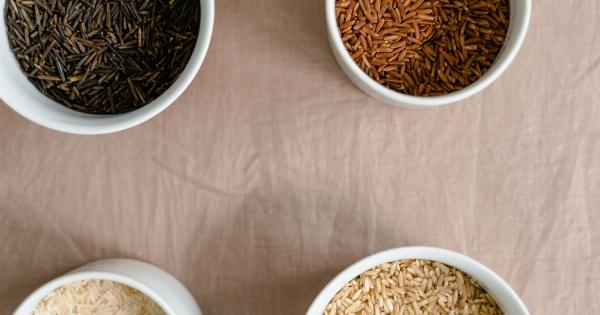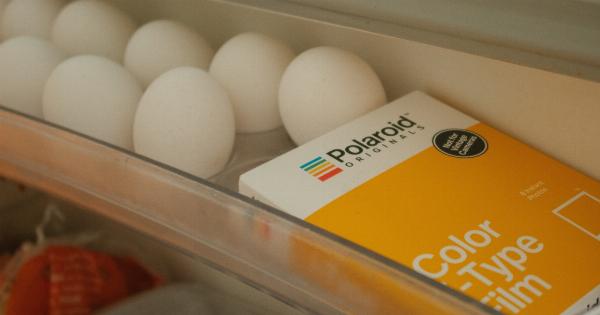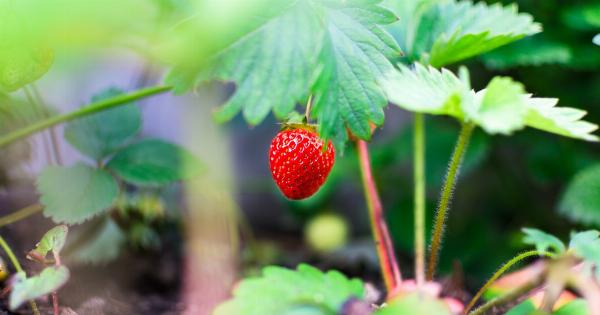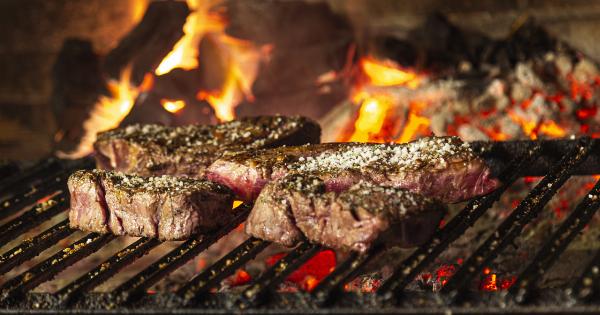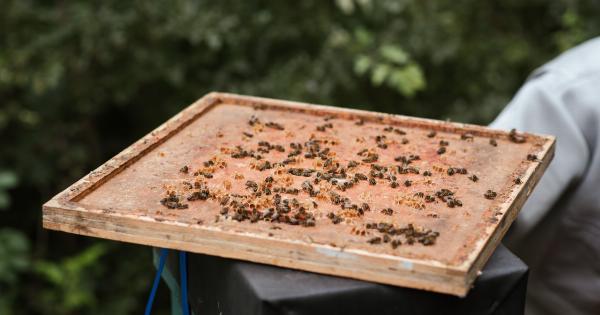Foods with Long Shelf Life
1. Honey
2. White Rice
3. Salt
4. Dried Pasta
5. Hardtack
6. Soy Sauce
7. Powdered Milk
8. Canned Foods
9. Jerky
10. Dried Beans
Conclusion
In a world where food waste is a significant problem, it’s important to know which foods have a longer shelf life than we may think.
While most perishable items have an expiration date that suggests we need to consume them quickly, there are several foods that can last for months or even years without going bad. These foods can not only help us reduce food waste but also serve as emergency supplies in case of emergencies or unforeseen circumstances. In this article, we will explore three such foods that don’t expire as quickly as you may think.
Foods with Long Shelf Life
1. Honey: Honey, often referred to as the “nectar of the gods,” has been used for centuries as both a natural sweetener and a preservative. Due to its low moisture content and acidic pH level, honey has an incredibly long shelf life.
When stored properly in a cool and dry place, honey can last indefinitely. In fact, archaeologists have discovered pots of honey in ancient Egyptian tombs that are over 3,000 years old and still perfectly edible.
2. White Rice: Rice is a staple food for a large portion of the world’s population. It comes in various types and colors, but white rice, in particular, has a longer shelf life compared to brown or wild rice.
Properly stored white rice can last up to 25-30 years. The key to its long shelf life lies in its low moisture content. If stored in an airtight container in a cool and dry place, away from moisture and pests, white rice can be a reliable food source for a prolonged period.
3. Salt: Salt is one of the oldest and most widely used food preservatives. Its ability to inhibit the growth of microorganisms and prevent spoilage makes it a key ingredient in many traditional preservation techniques.
Due to its natural properties, salt has an indefinite shelf life. As long as it is kept in a moisture-free environment, salt will remain safe to consume indefinitely. Whether it’s table salt, sea salt, or Himalayan salt, this essential condiment can last for generations.
1. Honey
Honey is a natural sweet substance produced by bees from the nectar of flowers. Its incredible shelf life is due to its composition.
With less than 20% water content and a low pH level of around 3.9, honey creates an inhospitable environment for bacteria and other microorganisms that can cause food spoilage. Additionally, honey is hygroscopic, which means it draws in moisture from its surroundings, further inhibiting bacterial growth.
To ensure the long-term storage of honey, it is crucial to store it in airtight containers away from direct sunlight and at a temperature between 50°F and 70°F (10°C and 21°C).
Honey may crystallize over time, but this is a natural process and does not indicate spoilage. Simply warming the honey in a warm water bath will dissolve the crystals and restore the honey’s original texture.
2. White Rice
White rice is a staple in many cultures and can be stored for an extended period without losing its nutritional value or becoming rancid.
Unlike brown rice or wild rice, which have higher oil content in the bran layer, white rice consists mainly of carbohydrates, making it less susceptible to spoilage.
The key to preserving white rice is proper storage. It should be kept in an airtight container to protect it from moisture, pests, and contaminants. Exposure to moisture can result in the growth of mold or bacteria, causing the rice to spoil.
Storing white rice in a cool and dry place, such as a pantry or cellar, will help maintain its quality and extend its shelf life.
3. Salt
Salt is more than just a seasoning—it is a natural preservative and has been used for centuries to prevent food spoilage. Salt works by drawing out moisture from food, creating an environment where bacteria and other microorganisms cannot thrive.
By inhibiting bacterial growth, salt effectively extends the shelf life of various foods.
For long-term storage, it is ideal to keep salt in an airtight container to prevent clumping due to moisture absorption. It should be stored in a cool and dry environment, away from direct sunlight. Even if salt clumps, it is still safe to consume.
Simply break up the clumps or grind the salt back into a granular form before using it.
4. Dried Pasta
Dried pasta, made from durum wheat semolina, is a popular staple in many households around the world. It is not only versatile and easy to prepare but also has a relatively long shelf life, making it a great pantry item.
When stored in a cool and dry place, away from moisture and insects, dried pasta can last for years.
Properly packaged dried pasta retains its quality for an extended period. It is crucial to keep it tightly sealed in its original packaging or transfer it to airtight containers to prevent moisture absorption.
Exposure to moisture can cause the pasta to become moldy or spoil. As long as the pasta remains dry and free from contaminants, it will not expire quickly.
5. Hardtack
Hardtack, also known as sea biscuits or ship’s biscuit, is a simple and durable food item that has been used for centuries. It was a common staple for sailors and soldiers due to its long shelf life, durability, and nutritional value.
Hardtack is essentially a dry and hard cracker made from flour, water, and sometimes salt.
Due to its low moisture content and lack of perishable ingredients, hardtack can last for years when stored properly. It was designed to withstand long voyages and harsh conditions without spoiling.
Hardtack should be kept in airtight containers or vacuum-sealed bags to protect it from moisture and pests.
6. Soy Sauce
Soy sauce, a savory condiment originating from East Asia, is made from fermented soybeans, wheat, water, and salt. The fermentation process and high salt content contribute to its long shelf life.
Properly stored soy sauce can last for years without losing its taste or quality.
Although soy sauce does not expire quickly, it is crucial to store it properly to maintain its flavor. Soy sauce should be kept in a cool and dark place, away from direct sunlight and heat sources.
Exposure to light and heat can lead to oxidation and a gradual decline in taste. Additionally, keeping the bottle tightly closed will prevent air from entering, further preserving its quality.
7. Powdered Milk
Powdered milk, also known as dry milk, is milk that has been evaporated to remove the water content, leaving behind a powder form. It is a convenient and versatile alternative to fresh milk and has a significantly longer shelf life.
Properly stored powdered milk can last for several months up to a year.
When storing powdered milk, it is important to keep it in an airtight container to prevent moisture absorption. Exposure to moisture can lead to the development of lumps or a rancid smell.
Additionally, storing powdered milk in a cool and dark place, such as a pantry or cupboard, will help maintain its quality and extend its shelf life.
8. Canned Foods
Canned foods, such as vegetables, fruits, soups, and meats, have a reputation for having a long shelf life. The canning process involves sealing food in airtight containers and then heat processing them to destroy bacteria and other microorganisms.
This preservation method allows canned foods to last for several years or even longer when stored properly.
To ensure the longevity of canned foods, it is essential to store them in a cool and dry place. Temperature extremes, such as excessive heat or freezing temperatures, can affect the quality and safety of the contents.
It is also important to regularly check canned foods for any signs of damage, such as bulging or leakage, as this may indicate spoilage or bacterial growth.
9. Jerky
Jerky is a popular dried meat snack that has been consumed for centuries. It is made by drying thinly sliced meat, typically beef, venison, or poultry, and removing the moisture content, which inhibits the growth of bacteria.
The result is a lightweight, portable, and protein-rich food that can last for months without refrigeration.
When storing jerky, it is important to keep it in airtight containers or vacuum-sealed bags to prevent exposure to moisture. Moisture can lead to mold growth or spoilage.
Jerky should be stored in a cool and dry place, preferably below 60°F (15°C), to maintain its quality and extend its shelf life. If properly stored, jerky can be a reliable source of sustenance during camping trips, hikes, or other outdoor activities.
10. Dried Beans
Dried beans, such as kidney beans, black beans, and lentils, are pantry staples that offer a long shelf life and nutritional benefits. They are rich in protein, fiber, and various vitamins and minerals.
Properly stored dried beans can last for several years, making them an ideal addition to an emergency food supply.
To store dried beans, it is important to keep them in airtight containers to prevent moisture absorption and pest infestation. Exposure to moisture can cause the beans to become moldy or spoil.
Storing them in a cool and dark place, away from sunlight and heat sources, will help maintain their quality and extend their shelf life.
Conclusion
While many perishable foods have a limited shelf life, there are several options that don’t expire as quickly as you may think.
Honey, white rice, salt, dried pasta, hardtack, soy sauce, powdered milk, canned foods, jerky, and dried beans are all examples of foods with extended shelf lives. By properly storing these items in cool and dry conditions, you can ensure that they remain safe to consume for months or even years.
These long-lasting foods not only help reduce food waste but also serve as important emergency supplies during challenging times.



